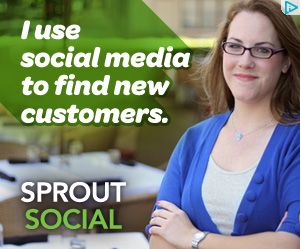Studies: The internet is more important than water…?!
 Can we access the internet if we have nothing to drink anymore, if our water is poluted? No, we can not! Sometimes, adults should ask themselves about, and quickly start to re-think, the values that they hand over to our kids. I am happy to have spoken with mine about this topic last year around the Blog Action Day 2010…
Can we access the internet if we have nothing to drink anymore, if our water is poluted? No, we can not! Sometimes, adults should ask themselves about, and quickly start to re-think, the values that they hand over to our kids. I am happy to have spoken with mine about this topic last year around the Blog Action Day 2010…
Some weeks ago, I have written about a UK study from the London Science Museum made clear that UK people rather prefer to have sunshine and internet connection than clean water. Now, Cisco comes up with a similar study.
The Cisco study states that one in three college students and young professionals consider the Internet to be as important as fundamental human resources such as air, water, food and shelter. The study is based on the second annual Cisco Connected World Technology Report. It examines the relationship between human behaviour, the Internet and networking’s pervasiveness across 14 countries in the world (United States, Canada Mexico, Brazil, United Kingdom, France, Spain, Germany, Italy, Russia, India, China, Japan, Australia).
Mahesh Gupta, Vice-President, Business-Borderless Networks, Cisco (India and SAARC), said in a teleconference on Thursday that about 33% across the globe and 95% Indian college students and young employees admitted that Internet was as important in their lives as water, food, air and shelter. The internet has become a crucial important thing in peoples’ lives. More than half of the respondents (62% of employees and 55% of college students) said they could not live without the Internet. They see it as an “integral part of their lives”.
From a face-to-face social perspective, it is also quite amazing to see that people had indicated that Internet was more important to them than meeting with friends, dating, or listening to music. Like in the UK study, updating Facebook seems to be of the highest priority – higher than socializing. Gupta stated that within certain countries 91% of college students and 88% of employees globally had Facebook account and check it on a daily basis at least once. Furthermore, seven of 10 employees have “friended” their managers and coworkers on Facebook, and 68% follow their manager or their work colleagues on Twitter.
From a hardware point of view, mobiles rank highest as their important technology device, as high as being “the most important technology”. Two-thirds of students and 58% of employees felt that a mobile device (laptop, smartphone or tablets) was the most important technology hardware in their lives. Young employees in the UK (74%), India (71%) and Australia (66%) ranked highest when it comes to the importance of mobiles devices.
Spot On!
The study also shows some trends that other industries should watch out for. When two of five students have not bought a physical book (except textbooks) in two years, this is a clear message to the print industry. And when 2 out of 3 choose Internet connection over cars, the it becomes clear why concepts like BMW Drive Now and Smart Car2Go become popular. However, the new trends also need to be watched from a distraction point of view when being online.

Let’s hope they don’t forget to drink some water…









 About one year ago Twitter started introducing their new monetization model: Promoted Tweets. Twitter expects 150 Mio. USD revenue this year with the program. Now, one year later the first “success story” have been published, and Gordon Mc Millan writes a nice summary “
About one year ago Twitter started introducing their new monetization model: Promoted Tweets. Twitter expects 150 Mio. USD revenue this year with the program. Now, one year later the first “success story” have been published, and Gordon Mc Millan writes a nice summary “
 One thing leads to another. Today we could transfer this quote to: One search leads to another social activity, and vice versa. And this interconnection of web-strategy tactics amplifies the user’s purchase decisions.
One thing leads to another. Today we could transfer this quote to: One search leads to another social activity, and vice versa. And this interconnection of web-strategy tactics amplifies the user’s purchase decisions.